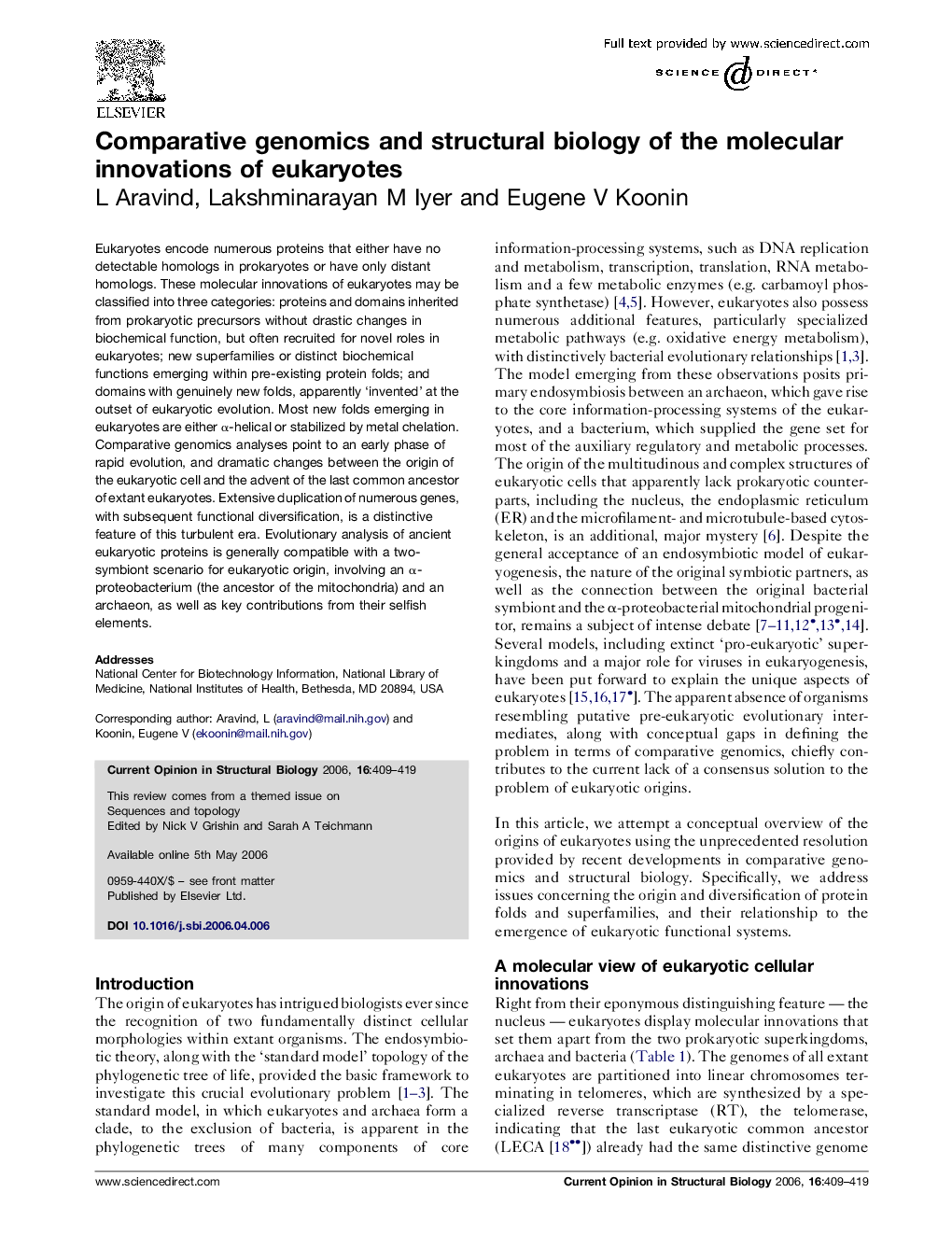| Article ID | Journal | Published Year | Pages | File Type |
|---|---|---|---|---|
| 1979606 | Current Opinion in Structural Biology | 2006 | 11 Pages |
Eukaryotes encode numerous proteins that either have no detectable homologs in prokaryotes or have only distant homologs. These molecular innovations of eukaryotes may be classified into three categories: proteins and domains inherited from prokaryotic precursors without drastic changes in biochemical function, but often recruited for novel roles in eukaryotes; new superfamilies or distinct biochemical functions emerging within pre-existing protein folds; and domains with genuinely new folds, apparently ‘invented’ at the outset of eukaryotic evolution. Most new folds emerging in eukaryotes are either α-helical or stabilized by metal chelation. Comparative genomics analyses point to an early phase of rapid evolution, and dramatic changes between the origin of the eukaryotic cell and the advent of the last common ancestor of extant eukaryotes. Extensive duplication of numerous genes, with subsequent functional diversification, is a distinctive feature of this turbulent era. Evolutionary analysis of ancient eukaryotic proteins is generally compatible with a two-symbiont scenario for eukaryotic origin, involving an α-proteobacterium (the ancestor of the mitochondria) and an archaeon, as well as key contributions from their selfish elements.
